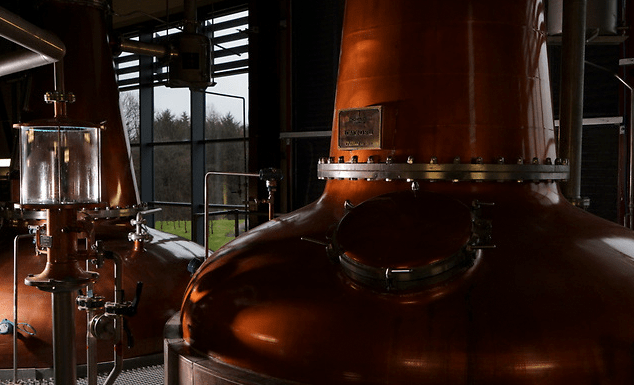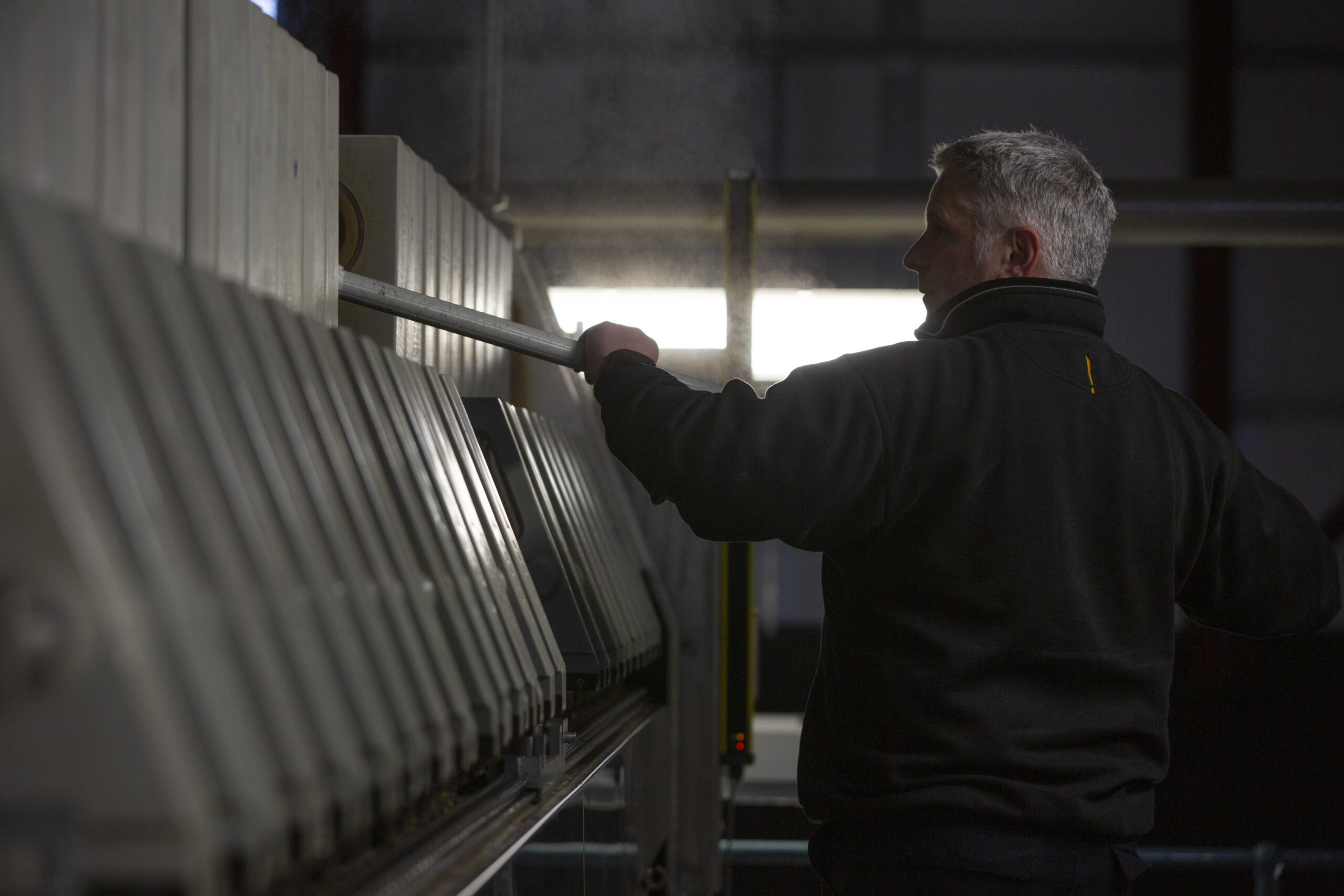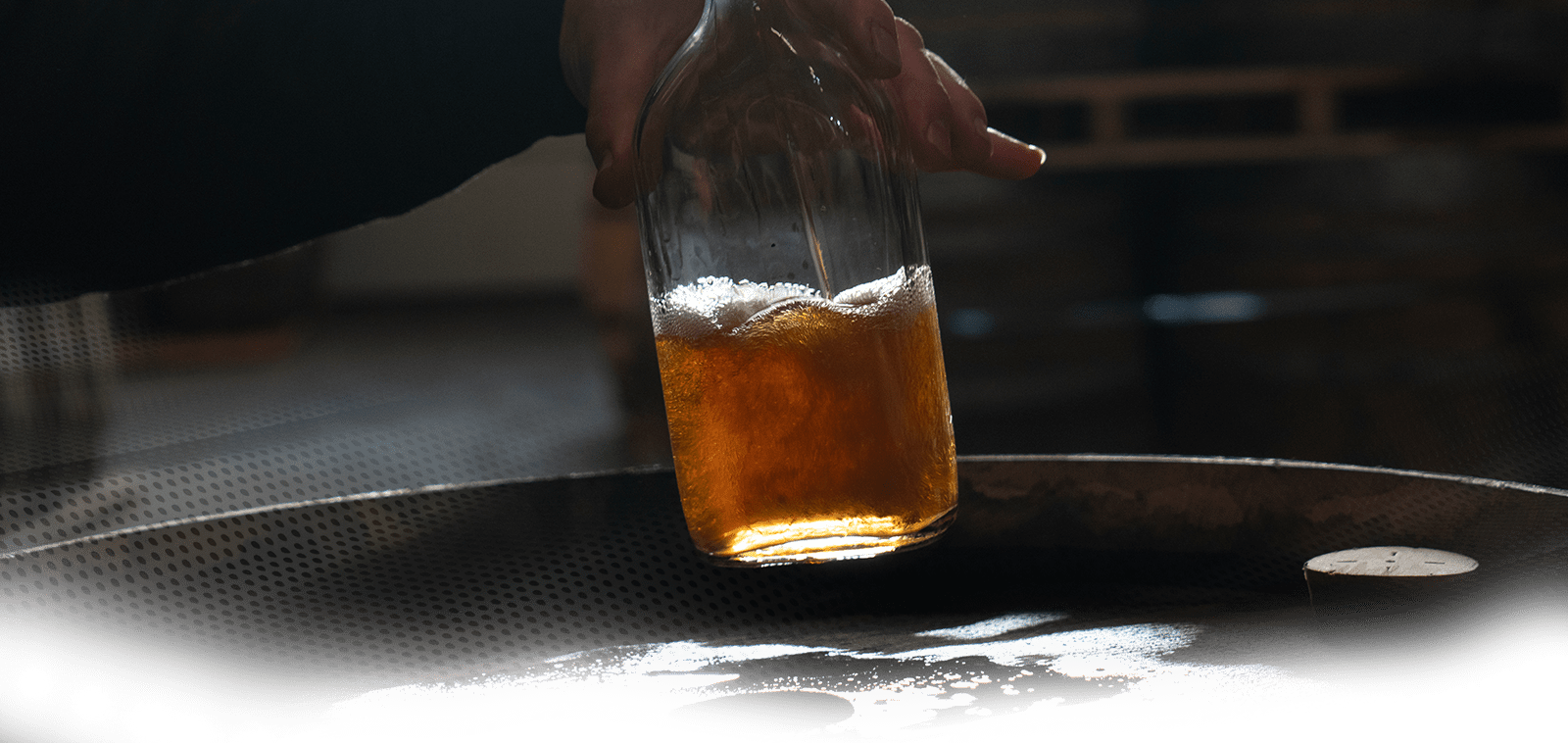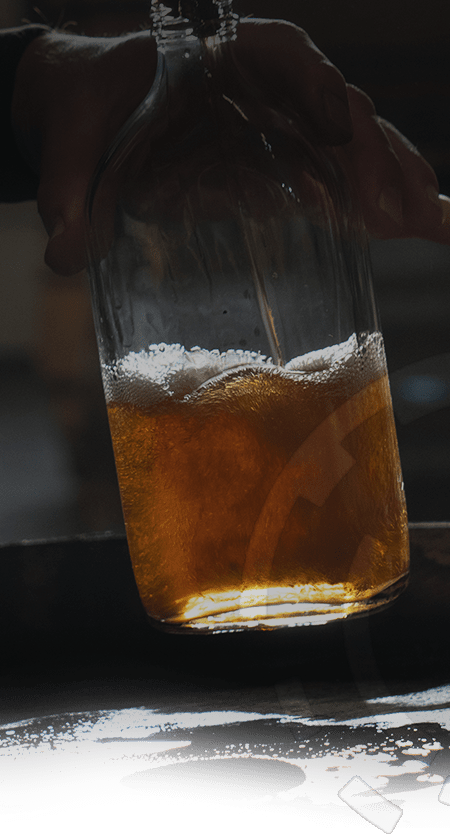First Pillar activity, Scope one emissions – Conversion to Hydrogen from Natural gas
Objective: to reduce the carbon emissions from the onsite generation of high-pressure steam
Current Product Carbon Footprint contribution, 35%
Target: 90% reduction in the carbon footprint currently produced by burning natural gas.
Timeline: end of 2025.


40% lower energy consumption
InchDairnie Distillery is an innovative and norm challenging low carbon emission distillery based between Kinglassie and Glenrothes in Fife, Scotland.
Our distillery energy consumption, per litre of pure alcohol, in 2021 was 40% lower than the industry average (4.931 KwHrs per 1 litre alcohol)*. Our water consumption is already below the industry’s 2025 target of 25 l per litre of pure alcohol (22.7 l per litre of pure alcohol, 2021)**.
*Chivas Bros, Vibe Awards Case Study 2020
**SWA published sustainability targets, 2020

Building an Energy Efficient Distillery
The distillery was built in 2015 with a combination of flavour and energy efficiency at the top of our priority list. Basing our knowledge on the traditions of Scotch without letting us be constrained by these allowed the distillery to install equipment uncommon in Scotch whisky industry, equipment that is important for sustainability and flavour.

InchDairnie Distillery Ltd Net Zero Strategy
Introduction
The company has defined sustainability as ‘’taking active steps to reduce the company’s product carbon footprint. The scope of the carbon footprint being from field to shelf’’. In 2018 the company engaged a specialist company to conduct an independent carbon footprint calculation for the product from the distillery. This report has been amended following the change in the electricity supply agreement to a renewable source. This report, non-redacted or edited, is published on the company’s website. The scope of the calculation excludes all outbound activities as the company, at that time, did not have a product in the market.
This carbon footprint report clearly identified the principal areas of the company’s product that were driving the carbon footprint. The two areas being the malted barley supply chain, our principle raw material, and the natural gas consumption at the distillery. The feasibility studies reported below further informed the development of the strategy.
The company has signed up to the SME Climate Commitment.
“Recognising that climate change poses a threat to the economy, nature and society-at-large, our company commits to take action immediately in order to:
1. Halve our greenhouse gas emissions before 2030
2. Achieve net zero emissions before 2050
3. Disclose our progress on a yearly basis
In doing so, we are proud to be recognised by the United Nations Race to Zero campaign, and join
governments, businesses, cities, regions, and universities around the world with the same mission.”
The InchDairnie Distillery is a business first and business last, all activities undertaken to reduce the companies carbon footprint must be commercially viable.

Work Stream One

Work Stream Two
Second Pillar activity, Scope two emissions – Malting Barley procurement policy change.
Objective: to reduce the carbon footprint of the company’s principle raw material, malted cereal.
Current Product Carbon Footprint contribution, 56%
Target: 50% reduction in the carbon footprint currently produced by the malting barley.
Timeline: end of 2030.
Strategy Support
Distillery design
When the distillery was designed the company used the Reduce, Reuse, Recycle philosophy. As a result, the distillery has a very low energy demand, and it is efficient in its use of cereals and water. This was achieved principally by the adoption of the following techniques:
Reduce
Installing a gas boiler with an exhaust gas economiser which increased the boilers efficiency.
Installing a hammer mill, mash conversion vessel and mash filter system as opposed to more traditional roller mill and lauter tun system. This reduced the water consumption, increased the raw material extraction efficiency and increased the resultant wash alcohol strength leading to a more energy efficient distillation process.
The cooling function at the distillery is a recirculating cooling tower which reduced the water demand of the distillery.
Recycle
Thermal Vapour Compression (TVR) systems were installed on both stills. This allowed for the recycling of 35% of the energy back into the stills.
Reuse
The introduction of a heat recovery condenser on the wash still allowing for all the energy rejected by the wash still to be reused elsewhere in the process.
The preheating of the feed stock to both stills by utilising waste heat.


